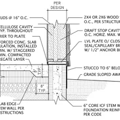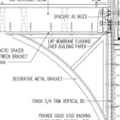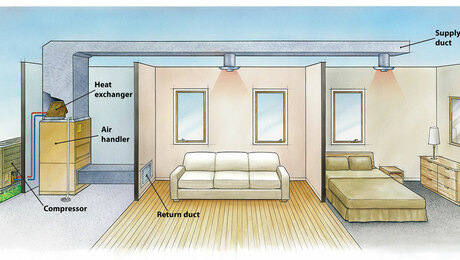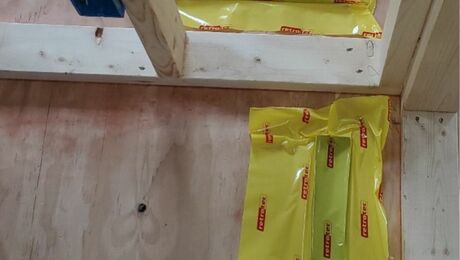LED Can lights Unvented roof
Building a house with a sealed single pitch roof in northern Idaho climate. R38 unfaced batts, Zip roof deck taped, 6″ Firestone ISO foam, Firestone membrane roof.
I will be doing wood ceilings and some drywall ceilings. In the past I never used can lighting to try to minimize ceiling penetrations and added heat from fixture. With all these new low voltage low profile LED can lights that don’t put off much heat, do you think it could still create a condensation problem on the interior of the roof deck?
Also, in the past I always did taped drywall as sort of an air seal on the ceiling. Do you think I need to drywall/tape first then install wood ceiling for air seal or can I just go straight wood?
Thanks guys
GBA Detail Library
A collection of one thousand construction details organized by climate and house part









Replies
The bigger issue is the cans leak air, and that air brings moisture into the unvented roof assembly. The moisture problem is much more of an issue than lost heat is. Don’t believe the AT “air tight” rating, either: think of it as “leaks less” instead. I always tape over all the rivets/screws/seams with foil tape when I have to put a can in a ceiling below attic or roof space as extra insurance, but you still have the “seal” around the can and the drywall. That seal isn’t usually very good.
If you can use the LED lights that mount in octagon electric boxes, those are better, because it’s easier to air seal the electric boxes compared to a recessed can fixture. I prefer the white fiberglass “hard boxes” for this instead of metal or the blue pvc boxes, because the fiberglass boxes don’t have holes. The fiberglass boxes are getting easier to find lately as the box stores are looking for alternatives to the pvc boxes that are currently in short supply.
Bill
Stan,
There are also a lot of nice flush mount LED fixtures that are almost indistinguishable from the recessed ones.
Thanks guys. I agree, its air leakage first but then a warming cavity with that newly introduced moist air.
Thanks for the tip on the flush mounts. I feel like they're relatively new but I think I saw them in a house recently. I'll do some digging.
You also still need an air barrier and class III vapor retarder (painted drywall) with this type of roof. One of the fancy variable perm membranes will also work instead of drywall.
If you want to skip the air barrier, you can but you need much more exterior rigid (something on the order of R50 rigid).
Yeah unfortunately I agree. Any suggestions on an air barrier that would still allow drying to the inside?